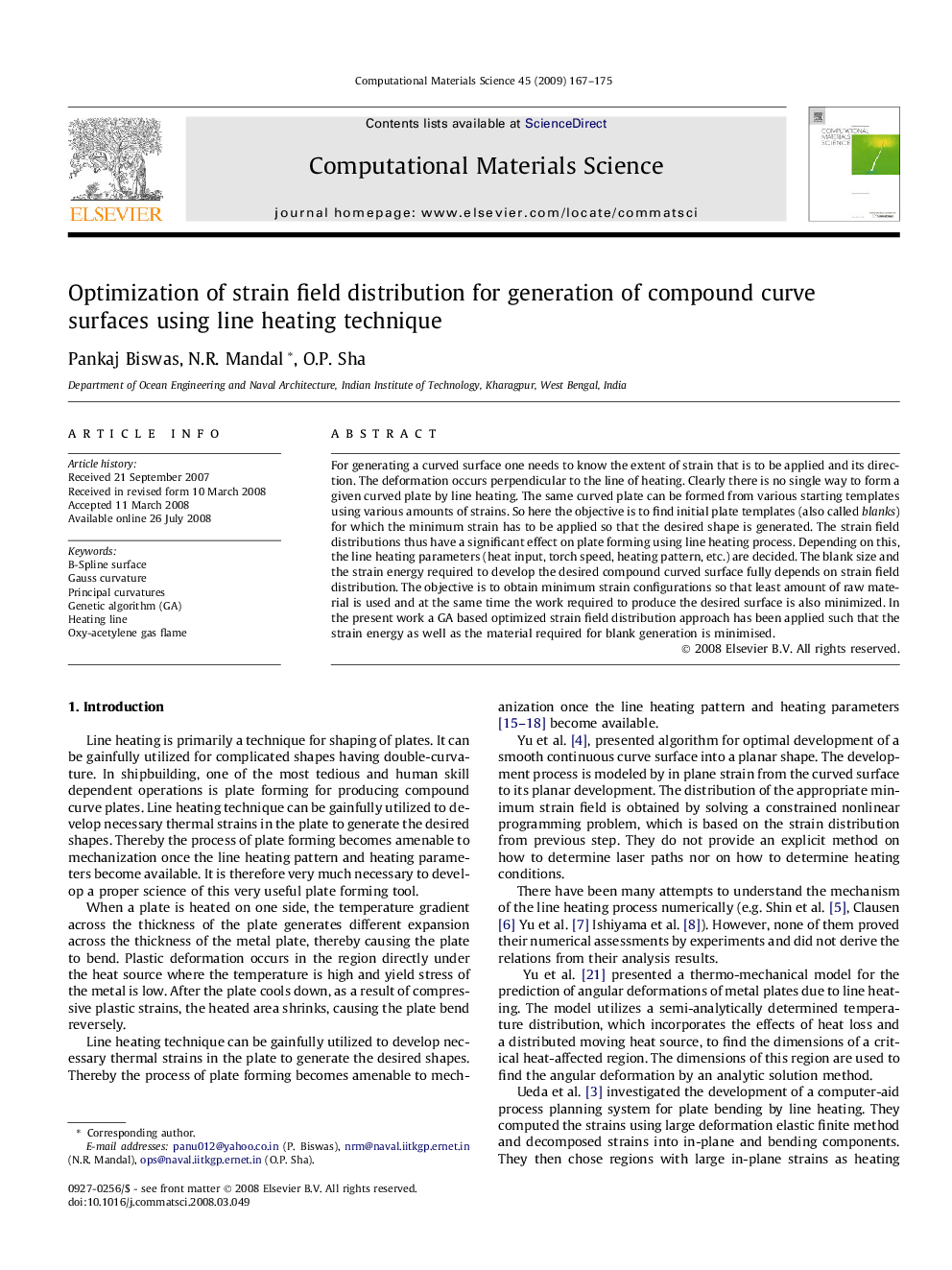| Article ID | Journal | Published Year | Pages | File Type |
|---|---|---|---|---|
| 1563703 | Computational Materials Science | 2009 | 9 Pages |
Abstract
For generating a curved surface one needs to know the extent of strain that is to be applied and its direction. The deformation occurs perpendicular to the line of heating. Clearly there is no single way to form a given curved plate by line heating. The same curved plate can be formed from various starting templates using various amounts of strains. So here the objective is to find initial plate templates (also called blanks) for which the minimum strain has to be applied so that the desired shape is generated. The strain field distributions thus have a significant effect on plate forming using line heating process. Depending on this, the line heating parameters (heat input, torch speed, heating pattern, etc.) are decided. The blank size and the strain energy required to develop the desired compound curved surface fully depends on strain field distribution. The objective is to obtain minimum strain configurations so that least amount of raw material is used and at the same time the work required to produce the desired surface is also minimized. In the present work a GA based optimized strain field distribution approach has been applied such that the strain energy as well as the material required for blank generation is minimised.
Related Topics
Physical Sciences and Engineering
Engineering
Computational Mechanics
Authors
Pankaj Biswas, N.R. Mandal, O.P. Sha,
